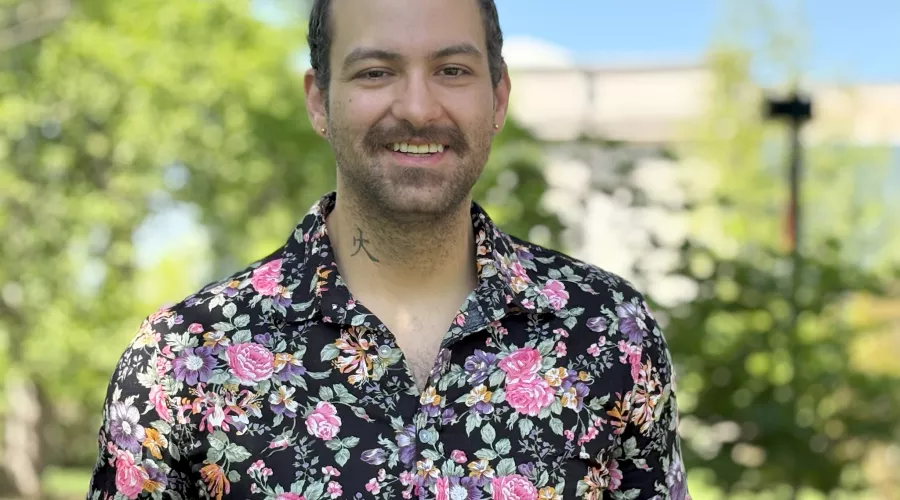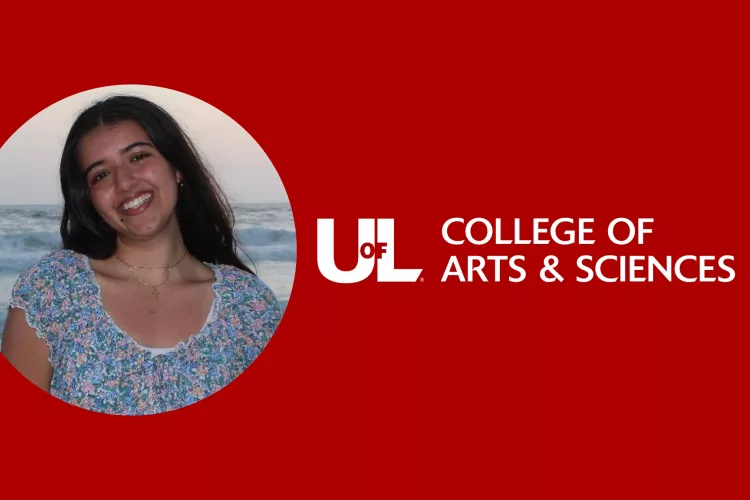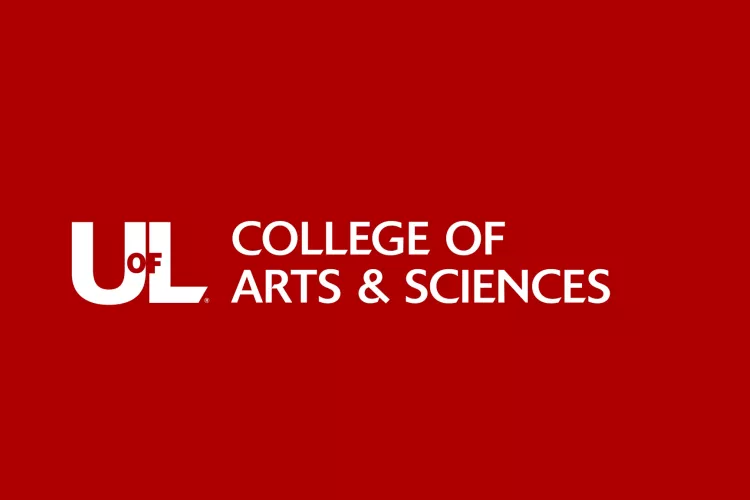Layers of Inspiration: UofL Art Student Captures Nature’s Shapes Through Stencil and Paint
May 21, 2025
Paul Wells
May 21, 2025
By Stephanie Godward, Communications and Marketing Director, College of Arts & Sciences
Paul Wells is a Studio Art major whose first foray into a stencil painting technique earned him the top presenter award for the humanities during this spring’s Undergraduate Arts & Research Showcase.
Wells completed the project during Intro to Painting. He used a paint-by-removal technique, along with a stencil method of covering two different pieces of wood grain with blue tape as he painted other areas, to create two distinct and colorful works of art.
“I was thinking a lot about color theory and nature, and kind of wanted to do it in two different ways,” he said. “I completed the stained glass–inspired piece on the larger board —both are deconstructed landscapes. The other one is a lot more up for interpretation. The cooler colors represent the land and then it moves into the sky.”
Wells, now a senior at Hite Institute of Art + Design, drew each piece initially, then used a knife to cut the shapes. He used a matte medium with acrylic paint to seal the tape off. He then painted them layer by layer and removed the tape for the final reveal.
“It’s a process, but it does produce some cool things,” he said.
Both pieces are very nature-inspired, which Wells said is a common motivator of his work. Using the wood panel as a canvas was a first for him that he enjoyed.
“It has such natural depth, and the wood grain was very nature-focused,” he said. “I was thinking about colors, how they interact, and when we look at the landscaping here, it’s all weird shapes, lines, and different colors. I wanted to capture that sense you get when you see a sunset that’s just incredible. You can sit there all day trying to get it right with a camera, but we’re not machines.”
Wells also said that blending ideas and disciplines is another source of his artistic inspiration as well.
“A lot of people may assume artists are not into the natural sciences, but that is the backbone of what we do,” he states. “The more you learn about it, the more you understand how your art is interacting with your own eye versus how everyone else is seeing it, too.”
Moving forward, Wells is excited to build on this process and experience.
“I am not necessarily looking to be a painter primarily; I like sculptures and installations a lot. I want to get into that and find a place for a sculpture or installation here on campus,” he said. “I could definitely see myself doing a stencil on some sort of sculpture installation. It’s a very useful technique, especially if you want to make some cool shapes on pottery.”
Related News


